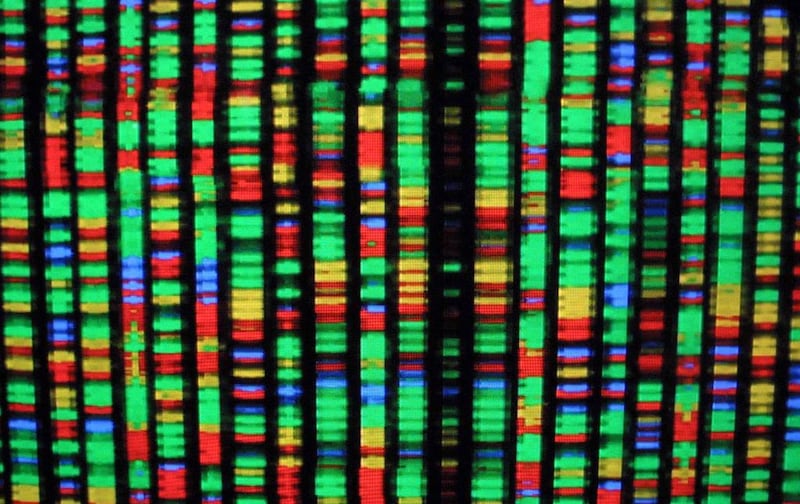It seems like every month we come across news that a gene responsible for a particular disease has been discovered. Breakthroughs in cancers, diabetes, heart disease and even obesity have been announced recently. Medical research is taking place across the globe but there’s a very good reason why the UAE needs to invest in finding genes, namely that a lot of the research is not looking at people of Arab ancestry.
People all share the same genes, with a few rare exceptions, but small variations within those genes are responsible for what makes us unique, including our individual risk of disease.
During the past decade, there has been a surge in the number of studies trying to identify the genetic variants implicated in common diseases. This drive has focused on people of European descent.
Although many risk variants in common diseases are shared between populations of different ancestries, population-specific variants have also been reported. This illustrates the importance of studying different populations to identify disease risks specific to certain groups.
Arabs’ history and the environment we inhabit have resulted in some diseases being more common than in people of other ancestries.
“We know that in Arab populations there is an increased prevalence of many common genetic diseases such as diabetes and some cancers, placing significant burdens on families and the health system,” says Dr Jimmy Liu, a postdoctoral associate at the New York Genome Centre.
Identifying Arabs’ unique genetic risk variants would lead to better prevention, diagnosis and treatment of common diseases in the UAE. We go about finding these genetic risk variants by comparing patients with a particular disease to healthy individuals.
The complete set of genetic material of a person, the genome, is made up of 3 billion base pairs.
By studying the genomes of healthy and diseased people, a geneticist is able to identify differences in the frequencies of risk variants. These variants are then further evaluated with the disease being studied to understand their biological function.
Recent studies have compared more than 100,000 individuals and significant associations between certain genes and diseases have been found. However, none of these discoveries have involved an Arab population.
The pathology of diseases and the causes of their development are mostly unknown. So by finding these genetic risk variants and understanding their effect, we gain new insights into the biological pathways a disease follows.
Armed with this information, researchers can begin to look at developing drugs to fight against the disease, as well as implementing better prevention methods, as environmental factors can play a big role in disease development.
If a person knows they carry risk variants for diabetes, for example, they might choose to take better care when it comes to diet. Some women with high-risk variants in some genes elect for a prophylactic mastectomy, where one or both breasts are removed, significantly reducing their risk of developing of breast cancer.
In addition, uncovering these risk variants can result in better diagnosis. Many diseases show similar symptoms, which can lead to misdiagnosis but through genetic testing of a patient, a physician is better informed to diagnose and choose the most appropriate treatments.
As the value of discovering these risk variants is obvious, some countries have started national genome sequencing projects. The UK’s £300 million (Dh1.7 billion) 100,000 genomes project is focusing on cancers and rare diseases, and some volunteers have already witnessed life-changing results.
Such projects are not only the preserve of western countries. Recently Saudi Arabia announced the Saudi Human Genome Programme, in which 100,000 Saudis will have their genomes sequenced to identify population-specific risk variants. This ambitious project makes the kingdom the Arab world’s leading centre for human genetics research.
There is no similar project in the UAE. International statistics rank the UAE relatively low in the percentage of GDP spent on research and development. Research grants through government institutions and private foundations are available, but they would not cover the costs of even small-scale human genetics projects.
“Increasing funding will lead to more high-quality genetic research being performed in the UAE, as costs are the biggest barrier to research,” says Dr Farida Al Shamali, an Emirati geneticist who has published studies on the population genetics of the UAE and some other Arabian Gulf countries.
Ultimately, it is up to our scientists to identify the genetic risk variants implicated in different diseases in our population – but they need funding.
That would build a platform for young Emirati scientists who are interested in understanding the debilitating diseases affecting our population.
“The unique population history of many Arab populations presents significant opportunities for the study of human disease genetics, with the potential to not only significantly improve global health but put Arab scientists at the forefront of one of the fastest-growing areas of science and industry,” says Dr Carl Anderson, a group leader at the Wellcome Trust Sanger Institute in Cambridgeshire.
As chronic diseases in the UAE continue to take up a growing percentage of the Government’s budget, investment in genetic research would yield large returns in the future.
newsdesk@thenational.ae
Mohamed Al Marri is an Emirati geneticist. He published a study in Nature Genetics on the discovery of genetic variants implicated in an autoimmune liver disease.





